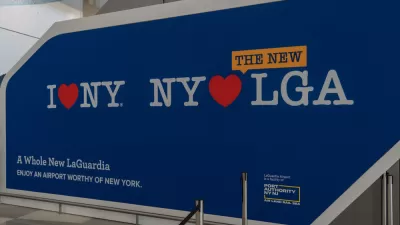Often depicted as drivers of local economies, airports have struggled to stay profitable as passenger air travel continues to languish. Steve Malaga presents the case that throwing money at this particular problem can actually make things worse.
The first decade of the 2000s has not been particularly kind to commercial air travel. Following heightened nerves in the wake of 9/11 and the greatest economic slump since the Great Depression, industry growth has practically screeched to a halt. Scrambling to keep their boats high in a sinking tide, many local governments have poured vast fortunes into building or expanding airports – to little avail and much taxpayer dismay, Malaga argues.
From rural Beecher, Illinois to metropolitan Pittsburgh to the Florida Panhandle, government agencies have been pushing a platform of resuscitation through investment and expansion. Often perilously financed and accompanied by devastating claims to eminent domain, these expansions and new airports require exorbitant fees from the airlines that operate there, which are in turn passed on to passengers, who then make their travel arrangements from a more affordable nexus.
Such is the case in Cincinnati, where some three-quarters of businesses fly employees out through the airport in Dayton, Ohio, over an hour away by car, to avoid higher fares at Cincinnati/Northern Kentucky International. "Unless you’re suffering from delusion," says aviation expert Darryl Jenkins, "you realize that the Cincinnati airport is now really in Dayton."
"Expanding airports isn’t always a bad idea, of course," concedes Malaga. "In a growing, thriving region, it may make sense: Atlanta’s Hartsfield-Jackson, for example, has spent $6 billion over the last decade to add needed terminal space and parking. Dallas/Fort Worth International Airport is investing $2 billion in new space to meet rising demand."
But when expansions and new construction require long-term commitments from airlines already on rocky footing, a bad gamble can turn into an onerous burden on taxpayers. MidAmerica St. Louis Airport, built in the nineties and based on optimistic projections for future demand, was one such gamble: "It took MidAmerica two and a half years to land its first scheduled passenger service, by Pan American Airways... That service started in August 2000 and ended in December 2001, a casualty of lackluster sales. Three other airlines—Great Plains, TransMeridian, and Allegiant—tried to make a go of MidAmerica, only to pull out quickly, even though they had received financial assistance to operate there."
Malaga closes with a dose of scrutiny for airport subsidies slated to generate economic growth: "Last spring, investigative reporters for Scripps Howard News Service boarded 11 flights at subsidized airports and found just two of them carrying more than two passengers. Together, the 11 flights had 130 empty seats, for which taxpayers nevertheless paid a total of $155,000."
FULL STORY: Airfields of Dreams

Alabama: Trump Terminates Settlements for Black Communities Harmed By Raw Sewage
Trump deemed the landmark civil rights agreement “illegal DEI and environmental justice policy.”

Study: Maui’s Plan to Convert Vacation Rentals to Long-Term Housing Could Cause Nearly $1 Billion Economic Loss
The plan would reduce visitor accommodation by 25% resulting in 1,900 jobs lost.

Planetizen Federal Action Tracker
A weekly monitor of how Trump’s orders and actions are impacting planners and planning in America.

Wind Energy on the Rise Despite Federal Policy Reversal
The Trump administration is revoking federal support for renewable energy, but demand for new projects continues unabated.

Passengers Flock to Caltrain After Electrification
The new electric trains are running faster and more reliably, leading to strong ridership growth on the Bay Area rail system.

Texas Churches Rally Behind ‘Yes in God’s Back Yard’ Legislation
Religious leaders want the state to reduce zoning regulations to streamline leasing church-owned land to housing developers.
Urban Design for Planners 1: Software Tools
This six-course series explores essential urban design concepts using open source software and equips planners with the tools they need to participate fully in the urban design process.
Planning for Universal Design
Learn the tools for implementing Universal Design in planning regulations.
Caltrans
Smith Gee Studio
Institute for Housing and Urban Development Studies (IHS)
City of Grandview
Harvard GSD Executive Education
Toledo-Lucas County Plan Commissions
Salt Lake City
NYU Wagner Graduate School of Public Service




























